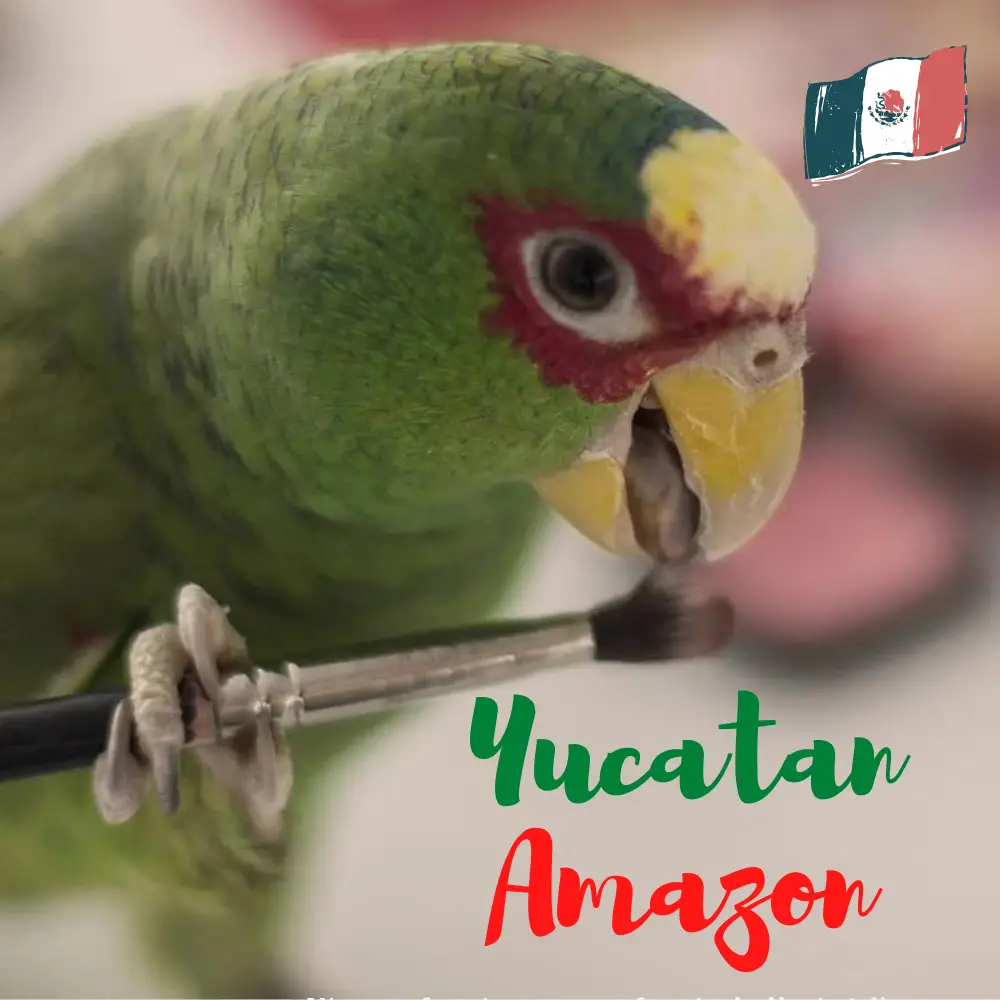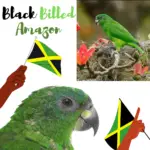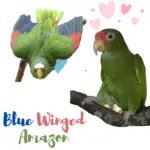
The Yucatan Amazon (Amazona xantholora) is an amazon parrots related species of the White-fronted Amazon (Amazona albifrons).
The Yucatan Amazon (Amazona xantholora) is 25-28 cm. in length and 200-232 grams. has lords and its thin front border, bright yellow; most of the front and crown, are white in color; the back of the crown is blue; wide band around the eyes, including upper cheeks, bright red; dark gray headphone ears.
| Reign | Animal |
|---|---|
| Fork | Chordata |
| Sub-embr. | Vertebrate |
| Class | Poultry |
| Order | Psittaciformes |
| Family | Psittacidae |
| Gender | Amazon |
Top green grass with prominent black tips on feathers gives a scalloped appearance, although upper tail-coverts are yellowish-green. Primary coverts Red; remaining coberteras (especially small and medium), green with black tips. Flight feathers in su mayoría de color azul con base verde a las primary. Bajo las wings, blue-green. Underparts green with black tips on breast feathers, although under tail-coverts are yellowish-green; above, the tail is green; below green with a yellow tip and the outer feathers red. Yucatan Amazon Yellow-horn woodpecker; yellow iris; gray legs.
Yellow-horn woodpecker; iris Yellow; gray legs.
In this species, sexual dimorphism exists. The female has a blue crown (nonwhite), little or no red around the eye, and yes primary coverts are green. The immature They are like females, but with pale yellow lores and pale blue crown. Sounds of the Yucatan Amazon.
Habitat
In Yucatan, the Yucatan Amazon lives mainly in the deciduous rainforest, probably avoiding dense tropical forests. However, their exact preferences are unknown due to the difficulty of distinguishing the White-fronted Amazon (Amazona albifrons). Observed pine forests and mixed forests of pine and Oak Quercus in northern Bélice, and pine forests in the Roatan highlands.
They are distributed at altitudes between 100 Yes 250 m.
Usually seen in herds, to form common dormitories to come 1,500 birds to perch and scattered in small fodder herds.
Reproduction
Food:
Reported foods include guilt of Acacia gaumeri, corn Yes citrus. The Yucatan Amazon feeds mainly on trees.
Distribution
Preservation
• Current IUCN Red List category: Least Concern.
• Demographic trend: Stable
• Population size: 20,000-49,999
- Justification of the Red List of the Category
This species has a very wide range, and therefore does not approach the thresholds for vulnerable under the criterion of the dimensional range (of occurrence <20,000 km2 combinan con un tamaño gama disminución o fluctuante, hábitat medida / calidad, o de la población tamaño y un pequeño número de lugares o fragmentación severa). The population trend seems stable, y por lo tanto la especie no se aproxima a los umbrales para Vulnerables según el criterio de tendencia de la población (> 30% decrease of more than ten years or three generations). The size of the population It can be moderately small to large, but is not believed to approach the thresholds for Vulnerable based on the population size criteria (<10,000 mature individuals with a continuing decline) is estimated at > 10% in ten years or three generations, or with a specific population structure). For these reasons, the species was assessed as Least Concern.
- population justification
Partners the flight estimated the population in a minor number of 50,000 individuals (A. is Panjabi slightly. 2008), which is placed in the group 20,000-49,999 individuals here.
- Rationale Trend
The population is suspected of being stable in the absence of evidence of reduction or serious threats.
- Threats
The main threats to this species are deforestation, hatching eggs and chicks directly from their nests, just like it illegally trades adult individuals. In addition, and, considering the differential distribution of this species within the Peninsula, You may think that the areas are sensitive to drastic declines in these species (Beissinger and Snyder 1992).
The Yucatan Amazon in captivity:
Very rare in captivity. the CITES Convention regulates international trade under Appendix II (Species not necessarily threatened with extinction, but whose trade must be controlled in order to avoid exploitation incompatible with their survival).
Alternative names:
– Yellow Lored Amazon, Yellow lored Parrot, Yellow-faced Amazon, Yellow-lored Amazon, Yellow-lored Parrot, Yucatan Amazon, Yucatan Parrot.
– Amazon of Yucatan, Amazon xantholore (French).
– Goldflügelamazone, Goldzügelamazone (German).
– Papagaio-de-iucatã (Portuguese).
– Amazona de Yucatán, Amazona Yucateca, Lora de Roatán, Loro Yucateco (Spanish).
scientific classification:
– Order: Psittaciformes
– Family: Psittacidae
– Genus: Amazona
– Scientific name: Amazona xantholora
– Citation: (Gray, GR, 1859)
– Protonimo: Chrysotis xantholora
Yellow-lored Parrot in Yucatán
SOURCE:Birdfun
Related Articles:




















